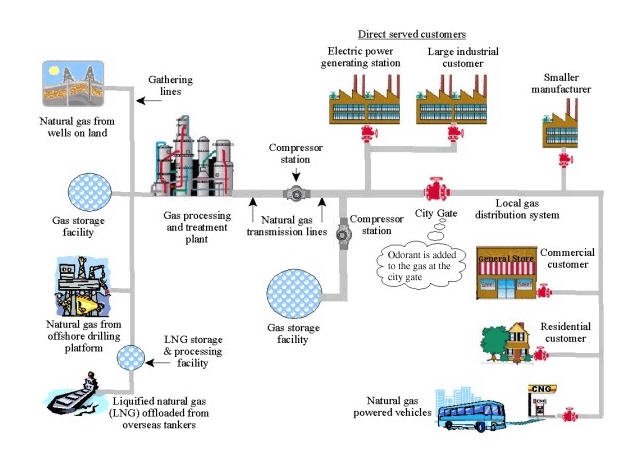COGA Fact Sheet: Pipeline Safety
Pipelines are the safest way to transport oil and natural gas. They’re also one of the leading ways to improve air quality and abate climate change by displacing higher carbon sources of energy with natural gas. The Obama administration found a pipeline emits 42 percent less greenhouse gases (GHG) than transporting the same amount of energy by rail. Additionally, this same report found that a pipeline has 0.1% of the incidents and 62% fewer barrels released compared to shipping by rail.
Image Source: U.S. Department of TransportationIn the United States more than two-thirds of all energy products are moved via pipeline versus other forms of transportation. Just one large pipeline provides significant benefits to the environment and communities by decreasing the amount of energy transported via rail. It would take 1,300 train cars per day to replace the capacity of one large pipeline.
According to the most recent numbers available from the U.S. Department of Transportation Pipeline and Hazardous Materials Safety Administration (PHMSA), 99.999997% of gas and crude oil is moved safely through nearly 300,000 miles of interstate transmission pipelines. Statistics from the National Transportation Safety Board show pipelines make up less than one one-hundredth of one percent (0.01%) of all transportation accidents in the United States. Additionally, pipelines are often buried underground in rights-of-way for safety and protection of the communities in which they are located. Colorado and other states have robust "Call-before-you-dig" programs that require anyone to call 811 to have pipelines located and marked prior to excavation.
Regulatory & Mapping
Safety is embedded in the entire life span of a pipeline. Different pipelines are regulated by different entities. From the selection of the safest location, the construction and burial underground, the hydrostatic testing prior to operation, corrosion control (both internal and external), ongoing pressure management, and leak recognition and response -- pipelines are the safest way to transport our critical energy supplies. Pipelines are heavily regulated by PHMSA and the Colorado Public Utilities Commission (PUC), and the Colorado Energy and Carbon Management Commission (ECMC) for smaller production lines. From 2019 to 2022, PHMSA finalized a trio of pipeline safety rules including: a 2019 rule addressing integrity management and other requirements for transmission pipelines; a 2021 rule that significantly expanded regulation of gathering pipelines; and a 2022 rule that further enhanced transmission line standards to improve safety and environmental protections. The 2021 gathering rule applies safety standards and reporting requirements to an estimated 400,000 miles of previously unregulated gas gathering lines. Under a certification agreement with PHMSA, the PUC will implement those rules that apply to intrastate natural gas transmission and gathering lines, strengthening the safety and environmental protections for pipelines even further and ensuring the continued safety and use of pipelines to transport energy for decades to come.
You can access a map of the approximate location of pipelines in your area at:
Robust Safety Programs
Pipelines are inspected throughout construction by both federal and state officials. Once placed in operation, highly trained personnel monitor pipelines from control rooms 24 hours a day, 7 days a week, 365 days a year. Technology is a main driver of continuous pipeline safety improvement. Ongoing safety improvement efforts include using new technologies to evaluate pipelines and other parts of pipeline systems, analyzing data, and sharing best practices as the industry drives towards the goal of zero incidents.
Pipeline safety measures also include: comprehensive integrity management systems; operations maintenance emergency management; public awareness; damage prevention; operator qualifications; facility response plans; and drug and alcohol testing.
Integrity management systems are regulated under Title 49 of the Code of Federal Regulations (CFR) Part 195, § 195.452 for hazardous liquid pipelines, Part 192, Subpart O for gas transmission pipelines, and Part 192, Subpart P for gas distribution pipelines. These systems require:
Performance of pipeline integrity testing
Identification of weaknesses to assist regulatory agencies in ensuring pipeline safety and improve the public understanding and confidence in pipeline safety
The identification of high-consequence areas
Pipeline integrity evaluations and reassessment of program requirements occur on recurring intervals for hundreds of thousands of miles of pipelines
Additional mitigation and risk analysis
A program of accountability and continuous improvement
Leak Recognition & Response
Pipelines are heavily regulated for leak detection. First, they are often buried underground and labeled with bright markings above ground in their approximate location. Pipeline leaks can be simply detected by sight, sound and smell. Pipeline companies can use pressure sensing devices to know if there is a leak and often conduct aerial surveys with methane detection systems to identify leaks. On the ground resources and walking inspections can also identify potential problems. There are robust reporting requirements and public outreach campaigns such as Colorado 811 and Xcel Energy and other utilities safety mailers that tell the public how and whom to notify in the event that a pipeline leak is detected. Responses to leaks are immediate and swift, pipeline leaks can be quickly isolated to stop the leak and repaired quickly to prevent any additional leak from the pipeline. Robust management systems are in place to ensure this process is safe, swift, and efficient.
Gas Pipeline Safety Program Performance Audit
The Office of the State Auditor in Colorado recently published the results of its Gas Pipeline Safety Program Performance Audit following a legislative request. Colorado’s oil and natural gas industry values the important role regulating entities play in validating pipeline safety and maintaining public confidence in the safe operation of the state’s network of critical pipeline infrastructure. While the audit brought to light significant opportunities for improvement in internal state administrative processes, it did not evaluate or call into question the scope and effectiveness of federal or state pipeline safety standards. Colorado has some of the most stringent regulations in the nation and we will continue to work diligently to assure Coloradans that pipelines remain the safest way to transport critical energy for the benefit of all.
Additional Resources & Information
American Fuel & Petrochemical Manufacturers | https://empower.afpm.org/safety/are-pipelines-safe
U.S. Department of Transportation | https://primis.phmsa.dot.gov/comm/IM.htm?nocache=2501
U.S. Department of Transportation Pipeline and Hazardous Materials Safety Administration | https://www.phmsa.dot.gov/safety-awareness/pipeline/pipeline-leak-recognition-and-what-do
U.S. Department of State: Final Supplemental Environmental Impact Statement for the Keystone XL Project, 2014
Liquid Energy Pipeline Association



